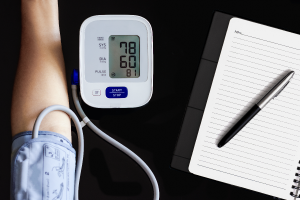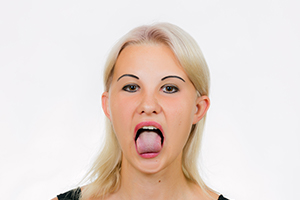

Monkeypox is a viral zoonosis, a virus transmitted from animals to humans. The Monkeypox virus, a member of the orthopoxvirus family, has symptoms largely mimicking those of Smallpox, a contagious deadly viral disease that was eradicated in 1980. While the Monkeypox virus was first detected in 1958, and its first human outbreak was reported in 1970 in the Democratic Republic of Congo (DRC), the infection remained mostly confined to the African rainforests. But with increasing international travel, the spread of the virus was inevitable.
The recent outbreak of Monkeypox in the US and Europe has sent alarm bells ringing. Researchers and the medical fraternity across the globe are looking into more efficacious ways of treatment of the disease and containing its spread. Read through to know all about the Monkeypox outbreak.
Monkeypox Virus Transmission
Monkeypox Virus follows a zoonotic chain of transmission, i.e. it transmits from animals to humans. The transmission occurs upon direct contact with the blood, bodily fluids, or cutaneous or mucosal lesions of infected animals. The common carriers of the Monkeypox infection include rope squirrels, tree squirrels, Gambian pouched rats, dormice, and different species of monkeys.
The human-to-human transmission of the Monkeypox virus happens upon close contact with an infected person. Transmission via droplets and respiratory secretions, touching skin lesions of an infected person and using contaminated objects are the possible modes of spread.
Human transmission of the Monkeypox virus is also possible through sexual transmission routes. An infected mother can also pass on the infection to her unborn child.
Monkeypox Symptoms
The incubation period, also known as the latency period, is the interval between the actual exposure and the onset of symptoms. For Monkeypox infection, the incubation period is typically between five days to three weeks.
After exposure, the infection manifests in the following way:
Stage 1
The early signs of infection typically last up to five days.
Monkeypox symptoms in humans include:
- Fever,
- Severe headache,
- Swollen lymph nodes or lymphadenopathy
- Back pain,
- Muscle aches or myalgia
- Lack of energy or asthenia
- Flu-like respiratory symptoms like sore throat, nasal congestion, or cough
Lymphadenopathy is a distinctive symptom of Monkeypox disease as compared to other diseases like chickenpox, measles, and smallpox caused by members of the orthopoxvirus family.
Stage 2
The second stage of the infection is marked by skin eruptions. They usually surface within three days of the onset of fever.
The initial appearance of a Monkeypox rash is a red, flat, painful bump. These bumps slowly turn into blisters filled with pus. Over the next two to four weeks, as the blisters begin to heal they will eventually crust over and fall off.
The rashes appear on the face and palms of the hands and soles of the feet. The sores may also appear in the mouth, vagina, or anus.
Monkeypox is a self-limited disease with the symptoms of the infection lasting up to four weeks. It is important to note that not everyone develops all symptoms of Monkeypox disease. The symptoms may vary from person to person.
Diagnosis of Monkeypox
The medical practitioner will collect information regarding the
- Date of onset of fever
- Date of onset of rash
- Current status of the individual or the stage of the rash
The clinical diagnosis of Monkeypox is often confused with other rash illnesses like measles and chickenpox. But the presence of swollen lymph nodes will help the medical practitioner distinguish Monkeypox from other diseases with skin eruptions.
In suspected cases, Monkeypox is confirmed through testing of a tissue sample collected from an open skin lesion. The lesion sample is stored in a dry, sterile tube under cool conditions. The collected sample then undergoes polymerase chain reaction (PCR) testing or genetic fingerprinting.
Confirming Monkeypox disease through a blood sample check or antigen and antibody detection methods are not recommended as they can give false positive results.
Monkeypox Treatment
There is no specific treatment plan for Monkeypox virus infections. As Monkeypox is genetically similar to Smallpox, nearly all antiviral drugs and vaccines available for Smallpox can be used as Monkeypox treatment options.
Furthermore, A supportive symptomatic treatment is recommended where healthcare providers will typically prescribe medicines to try to relieve symptoms. Antibiotics form part of the secondary treatment plan and are used only in case bacterial infections develop in the skin lesions.
The Monkeypox disease is self-limited and symptoms begin to ebb within two to four weeks. Although Monkeypox is not fatal, in severe cases, it can lead to complications like pneumonia, encephalitis, and inflammation of the brain, which can prove fatal. A majority of Monkeypox patients recover without treatment.
Monkeypox Prevention
Limiting human contact with infected animals and restrictive person-to-person contact is the best way to contain the spread of the Monkeypox virus. To keep you protected from Monkeypox, the main precautions include:
- Avoid prolonged contact with people infected with the virus.
- Avoid skin contact with people who have skin lesions.
- Avoid contact with respiratory secretions.
- Do not touch or peel scabs of people infected with the virus.
- Avoid coming in contact with the bedding and belongings of the patient as these might be contaminated with the virus.
- Do not share dishes and other eating utensils with a person with Monkeypox
- Avoid contact with infected animals
- Thoroughly clean and cook all meat products
- Avoid having sex with a person with Monkeypox
- Do not kiss or cuddle a person with Monkeypox
- For safe sex, use condoms and dental dams
In case you are a caregiver to a person infected with Monkeypox:
- Wash your hands thoroughly and frequently with soap and water
- Use alcohol-based hand sanitiser
- Wear a mask that adequately covers your mouth and nose
- Regularly clean and disinfect frequently touched surfaces
- Avoid skin-to-skin contact as much as possible – use personal protective equipment (PPE) when caring for Monkeypox patients.
Self-Care Tips for Monkeypox Cure
Staying in isolation is the best way to contain the spread of the virus. The following self-care tips will help you feel better and recover faster from Monkeypox disease:
- Periodic use of acetaminophen and pain relieving medicines to keep fever and body aches under control will help you feel better.
- Taking a warm water bath with colloidal oatmeal can provide instant relief from the dry, itchy feeling commonly associated with skin rashes.
- Do not touch or peel the skin lesions. Keep all your body parts covered with loose clothing. This will help limit the spread to the environment.
- For lesions on hands and feet, use gauze or bandages to keep them lightly covered.
- Avoid coming in contact with people and pets.
- Stay in isolation until all lesions heal.
- Take adequate rest, eat good food, and stay well hydrated.
Get in touch with your healthcare provider in case of:
- Persisting high-grade fever
- Swollen lymph nodes and severe body pains
- Appearance of new rashes or sores
- Pus infection in skin bumps
Seek medical care immediately in case of:
- Trouble or irregular breathing
- Chest pain
- Stiffness in the neck
- Disorientation or delirium, i.e. confusion or inability to think clearly
- Slurring of voice
- Difficulty speaking or moving
- Loss of consciousness
- Onset of seizures
Who is at Higher risk?
A certain group of people may be at higher risk of getting severe Monkeypox infection. These are:
- Children below the age of 8 years
- People with the compromised immune system
- Pregnant women
- People with a history of skin conditions
Monkeypox Vaccination
Research studies suggest that already administered Smallpox vaccination is about 85% effective in preventing Monkeypox. A small scar on the upper arm is an indication that you are already vaccinated against Smallpox.
In 2019, JYNNEOS became the first vaccine to be approved in the US as a potential Monkeypox cure. JYNNEOS is a two-dose vaccine administered at a gap of four weeks. The immune protection reaches its maximum after 14 days of getting the second dose of the vaccine. But because of limited availability, the first dose of the vaccine is prioritised. Hence, it is not widely available for public use at large.
Conclusion
On July 23, 2022, WHO declared Monkeypox as a Public Health Emergency of International Concern (PHEIC). As an emerging threat, creating awareness about the disease is paramount. The world cannot afford another COVID-19-like situation. Therefore, containment of the Monkeypox spread is important. The early symptoms of Monkeypox include flu-like conditions accompanied by fever, chills and body aches. The characteristic skin rashes appear within three days of the onset of fever. The condition is self-limiting and usually settles within two-four weeks. The infection typically spreads through respiratory secretions, touching skin lesions, sexual routes and from infected mother to unborn child.




